This is an image of Rhea.
Click on image for full size
NASA/JPL
Rhea
Rhea was discovered by G. Cassini in 1672. Rhea is the 5th farthest moon from Saturn.
Rhea is one of the icy moons. Rhea is about as wide as the state of California is long.
Rhea is has many craters and also has wispy white streaks across the surface. This moon looks very much like Dione, Enceladus, and Tethys, and is the biggest of the four of them.
You might also be interested in:
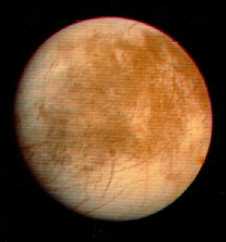
Icy moons are moons which are made of ice. These moons are unlike the earth's moon, which is made of rock. Perfect examples of icy moons are 3 of the Galilean satellites, Europa, Ganymede, and Callisto.
...more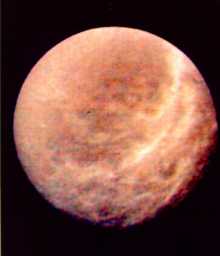
The surface of Rhea is like many icy moons. Rhea is heavily cratered (even if it doesn't look like it in this picture). In fact, Rhea is has an many craters as Mimas, the "death star" moon. It also appears
...more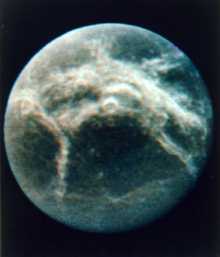
Dione was discovered by G. Cassini in 1684. Dione is the 7th farthest moon from Saturn. It is a small icy moon, lightly cratered, with white streaks across the surface. Dione is about as wide as the Oregon
...more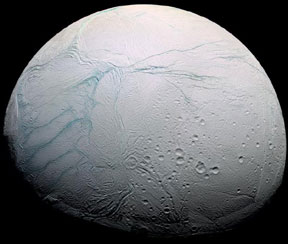
Saturn has // Call the moon count function defined in the document head print_moon_count('saturn'); moons. Enceladus is one of them. Enceladus is the sixth biggest moon of Saturn. The diameter of Enceladus
...more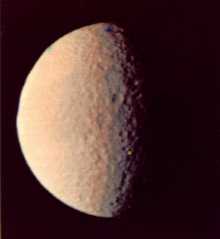
Tethys was discovered by G. Cassini in 1684. Tethys is the 8th closest moon to Saturn. Tethys is one of the icy moons. It is about as wide as the length of the Oregon coast. Tethys is has a surface, with
...more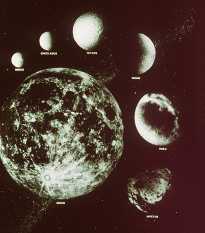
This is an image of the Earth's moon, shown in the lower left, with the icy moons of Saturn. The moons in order, starting from the top left are: Mimas, Enceladus, Tethys, Dione, Rhea, and Iapetus.
...more
The planet Saturn has a lot of moons. It has a total of // Call the moon count function defined in the document head print_moon_count('saturn'); moons! Saturn also has huge rings which you can see in any
...more
The surface of Dione does not have many craters, which means that the surface has changed in the past. Instead of many craters, it has wispy white streaks like the ones on Rhea, which go for many kilometers
...more












